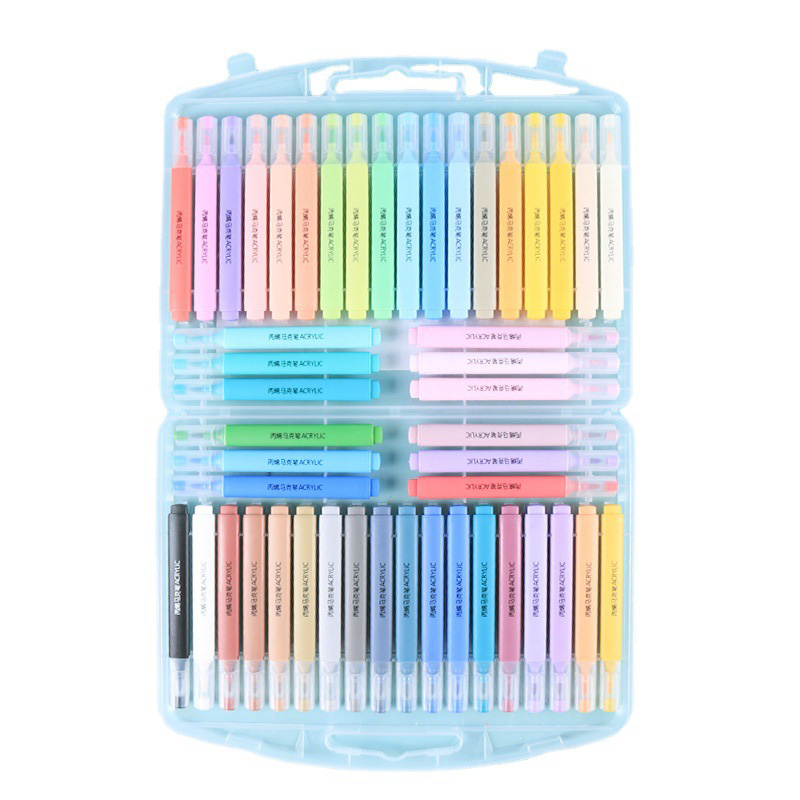Watercolor pens—often featuring brush-like, flexible tips and water-based ink—bridge the gap between traditional brush painting and modern pen work. Their ability to mimic the fluid, transparent effects of classic watercolor while offering precise control has opened up new possibilities in both fine art and design.
“The beauty of watercolor pens lies in their adaptability,” says Laura Devine, a freelance illustrator based in New York. “You can create washes, gradients, fine lines, or bold strokes—all without needing palettes, water cups, or brushes.”
Some brands, such as Tombow, Arteza, and Winsor & Newton, have created dual-tip models that offer a soft brush on one end and a fine liner or bullet tip on the other. This allows artists to seamlessly shift between delicate color blending and sharp outlines in a single piece.
Accessibility Drives Market Growth
One of the biggest advantages of watercolor pens is their accessibility. They remove many of the barriers associated with traditional watercolor painting—such as the need for multiple brushes, palettes, and water management—making them ideal for beginners and hobbyists.
"Watercolor pens are user-friendly and mess-free, which makes them for new artists or students," explains Kenneth Liu, an art supply distributor based in Singapore. “They’re also popular with parents because they allow children to experiment with watercolors without the risk of major cleanup.”
This ease of use has made watercolor pens a staple in educational programs and online tutorials. From adult coloring books to professional illustration courses, they’re being introduced as tools that offer immediate, satisfying results.
Portability Fuels the Urban Sketching Movement
Portability is another key feature driving the popularity of watercolor pens. As part of the growing urban sketching and travel art movements, artists are increasingly choosing compact, all-in-one tools that support mobile creativity.
Watercolor pens—often paired with water brushes and sketchbooks—allow artists to capture cityscapes, nature scenes, and travel memories in real time. Some sets come in compact, roll-up pouches with color-coded caps and refillable cartridges, making them easy to carry and organize.

“Being able to paint while sitting on a park bench or waiting for a train is game-changing,” says Anna Morales, a travel sketchbook artist. “Watercolor pens let you respond instantly to your environment without missing the moment.”
Expanding Applications in Design and Illustration
While traditionally associated with fine art, watercolor pens are now making inroads into commercial illustration, fashion design, and even branding. Designers use them to create mood boards, product sketches, and mockups that benefit from their vibrant colors and fluid look.
Unlike digital brushes, watercolor pens offer tangible texture and a handcrafted quality that many brands are embracing. In industries where authenticity and storytelling are valued, these pens bring a distinctive visual character that stands out in marketing materials and product design.
"Designers want tools that inject warmth and personality into their work," notes Elise Hartmann, a creative director at a boutique branding firm. "Watercolor pens strike that balance between control and expressiveness."
Sustainability and Innovation
As environmental consciousness continues to influence consumer choices, manufacturers are responding with refillable pen designs and non-toxic, cruelty-free ink formulas. Some brands now offer eco-friendly packaging and vegan bristles, further broadening their appeal.
Technological innovation has also led to improvements in pigment load, ink flow, and lightfastness—making the pens more viable for archival-quality artwork. Blending techniques are becoming more refined, with innovations like self-moistening brush tips and dual-chamber ink reservoirs offering better control over transparency and saturation.
Market Trends and Outlook
The global watercolor pen market is projected to grow at a CAGR of 6.5% over the next five years, driven by rising demand from artists, students, and the growing creative hobbyist segment. North America and Europe remain key markets, while Asia-Pacific continues to show strong growth, particularly among younger consumers and online art communities.
E-commerce and influencer marketing play a major role in this trend. Social media platforms are flooded with time-lapse watercolor pen demonstrations, DIY tutorials, and unboxing videos—encouraging broader adoption and experimentation.
Retailers have responded by offering curated sets for specific needs, such as landscape sketching, botanical illustration, or journaling, as well as combo packs that include blending tools and special paper.